V-22 Osprey: Helicopter That Identifies as an Airplane
June 8th, 2024
8 minute read
The 1984 TV show Airwolf captured the imagination of a generation of young American males. I counted myself among them. The basic premise had a rogue pilot named Stringfellow Hawke stealing a classified state-of-the-art military helicopter gunship and then using it to fight crime or vanquish evil or some such.
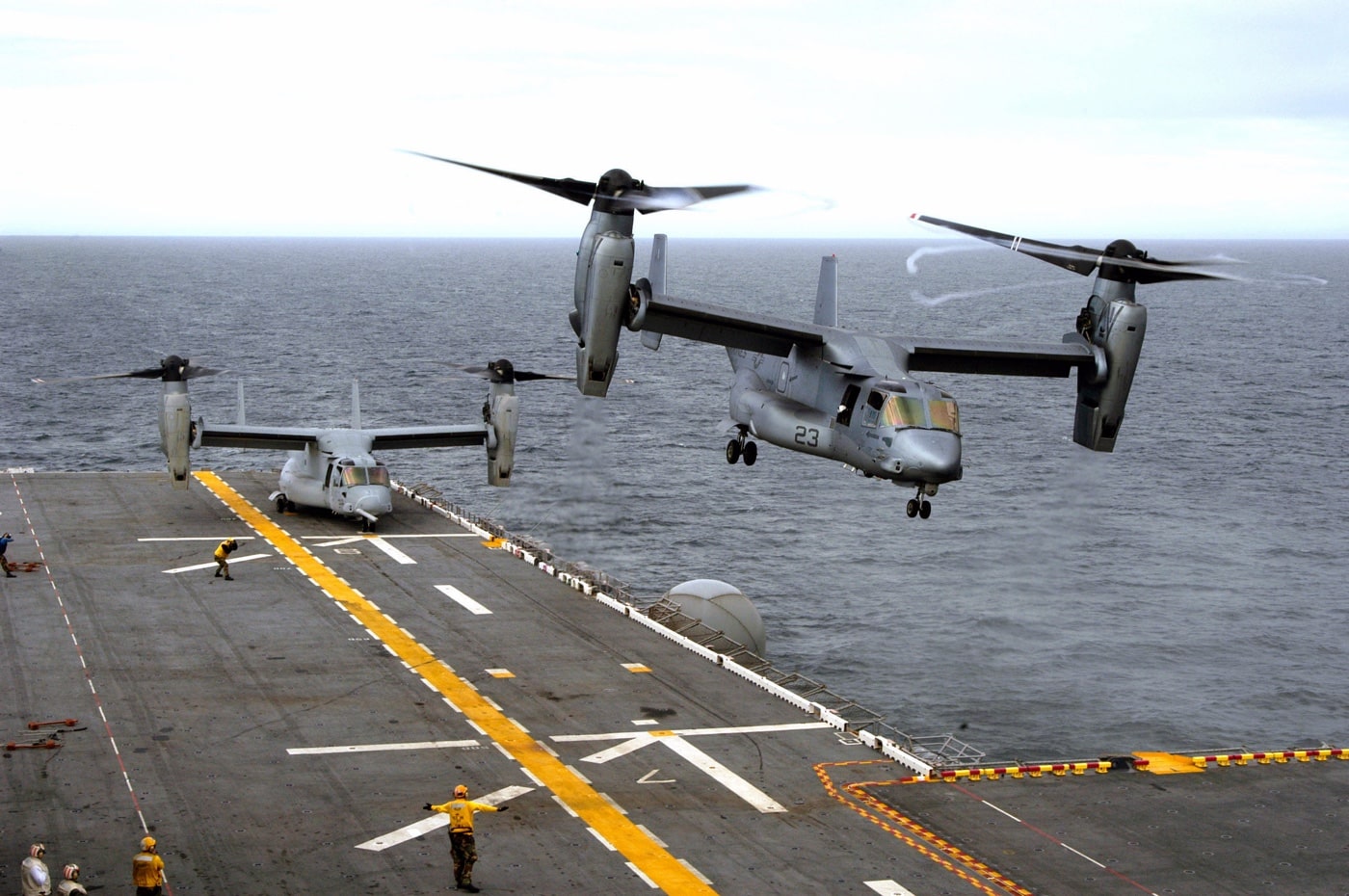
Forget for a moment that such a machine would require vast amounts of profoundly expensive maintenance and support. Arming the thing once would cost more than I’ll make in a lifetime. Regardless, the Airwolf helicopter looked cool. It was gratuitous rotating eye candy.
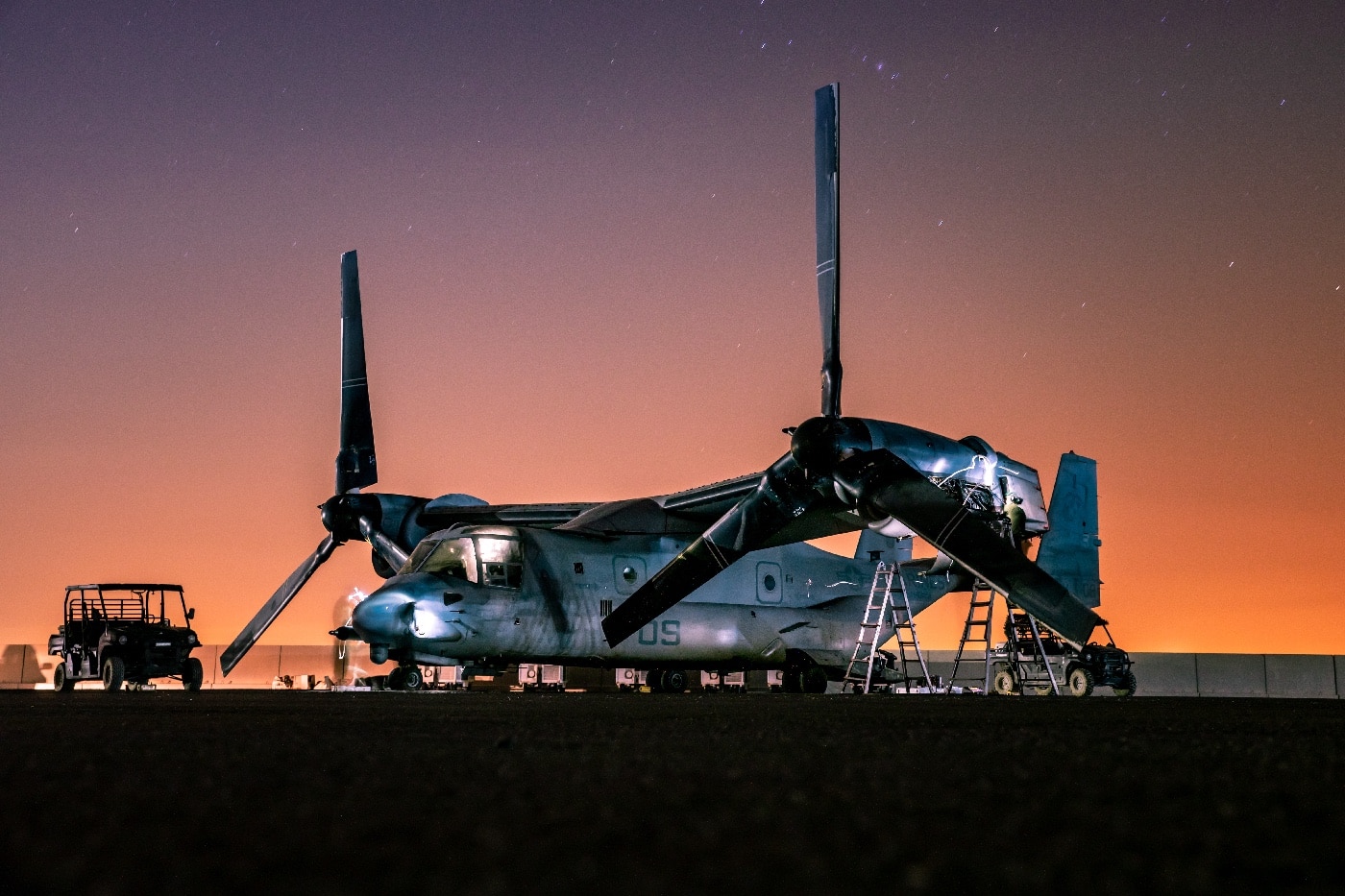
The most unbelievable aspect of this homogenously unbelievable show was that the pilot could hit a button on the cyclic, light up some kind of afterburners, and accelerate his gunship to supersonic speeds. That’s not only ridiculous, it’s against the law — like the laws of the universe. That simply can’t happen.
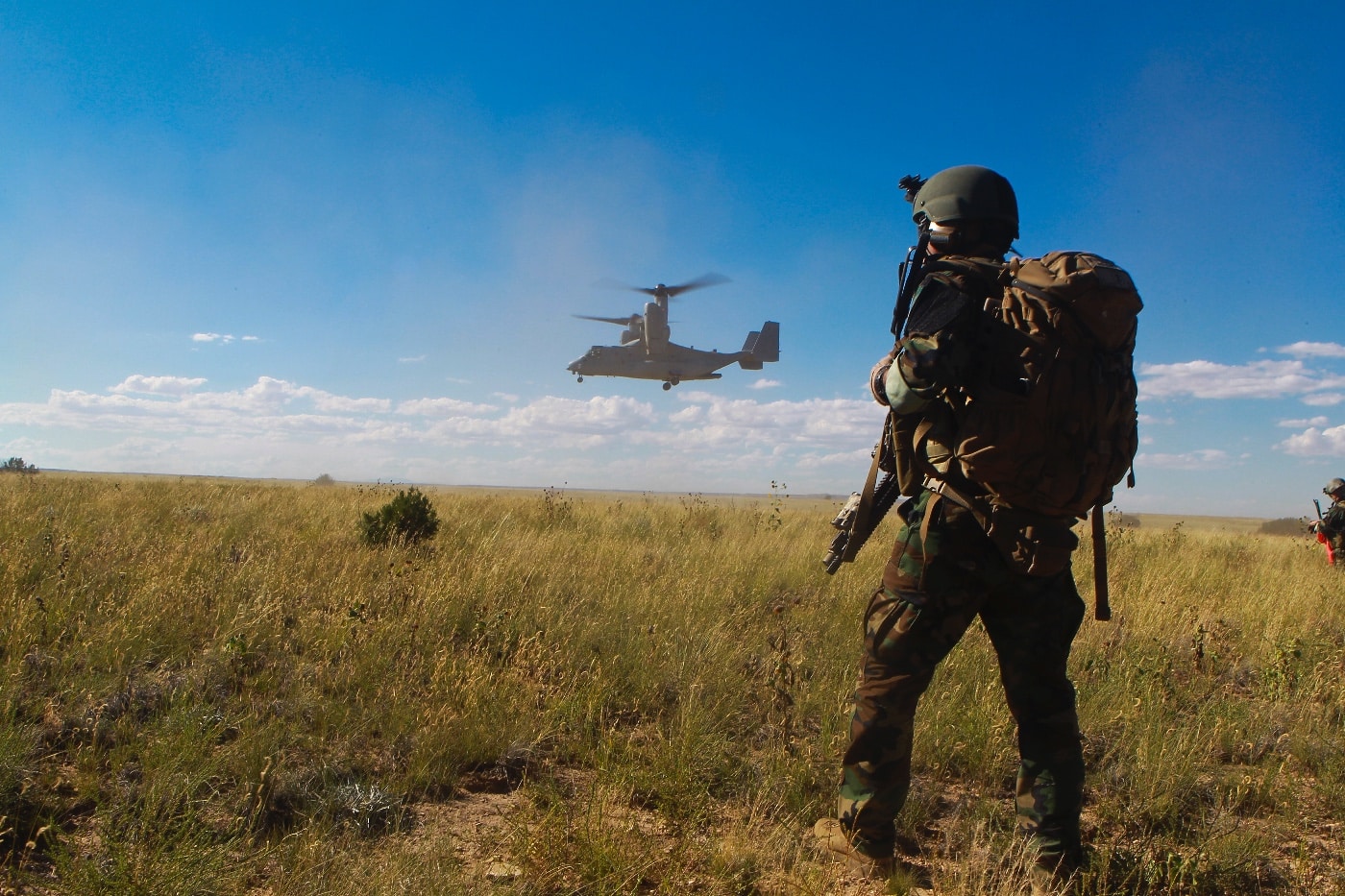
A Wee Bit of Physics
Generally speaking, the maximum airspeed of any helicopter is limited by the rotor tip velocity of the advancing rotor blade. The rotors on most western aircraft turn in a counterclockwise direction when viewed from above. Combloc and, inexplicably, French helicopters turn clockwise.
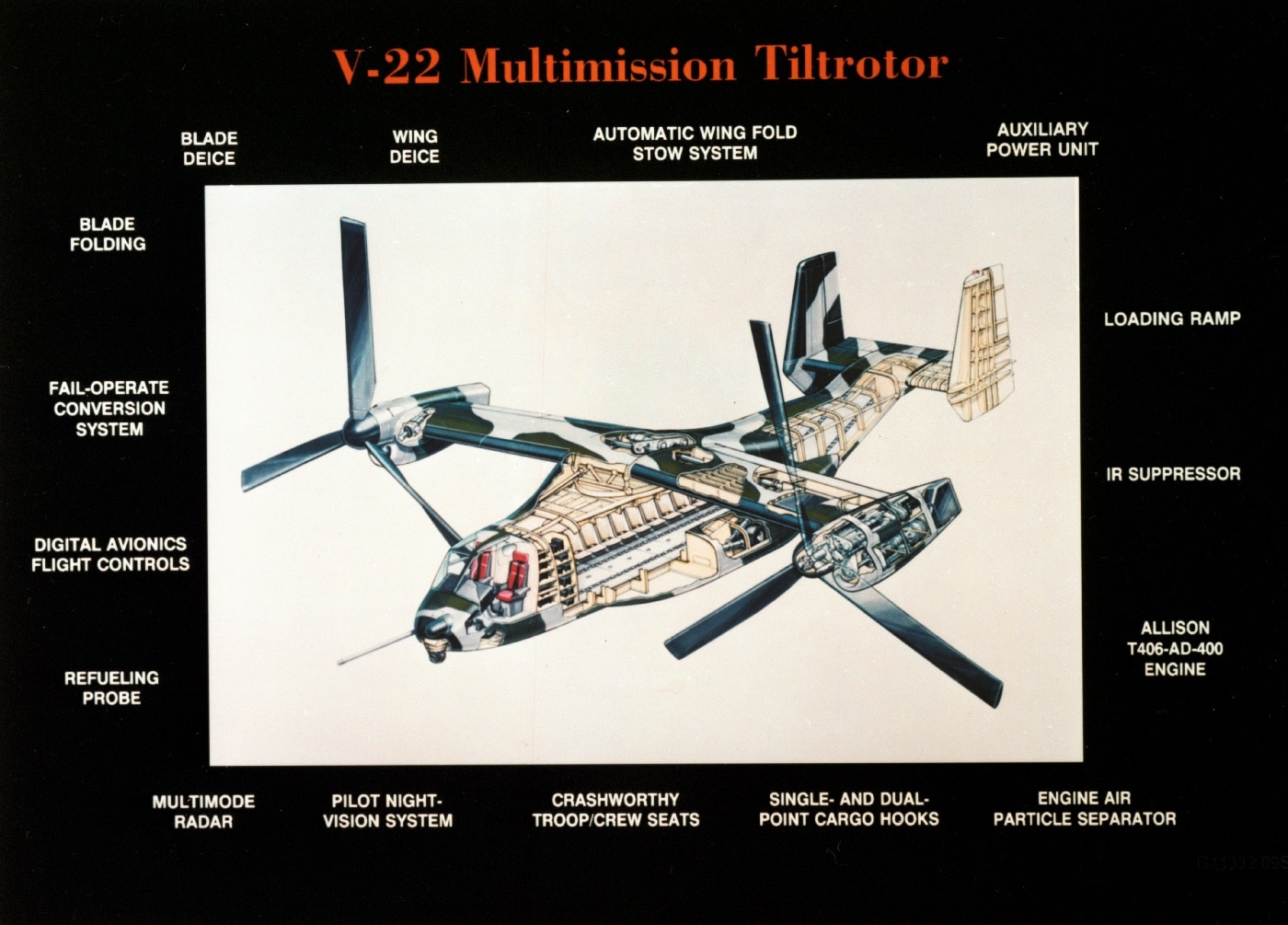
The absolute speed of the rotor tip of the retreating blade at the 9 o’clock position is the airspeed minus the rotational velocity of the rotor system. The absolute speed of the rotor tip of the advancing blade at the 3 o’clock position is the sum of the airspeed and the rotational velocity of the rotor system. As the advancing rotor tip approaches the speed of sound you begin to have problems with compressibility. This is the limiting factor in helicopter airspeeds.
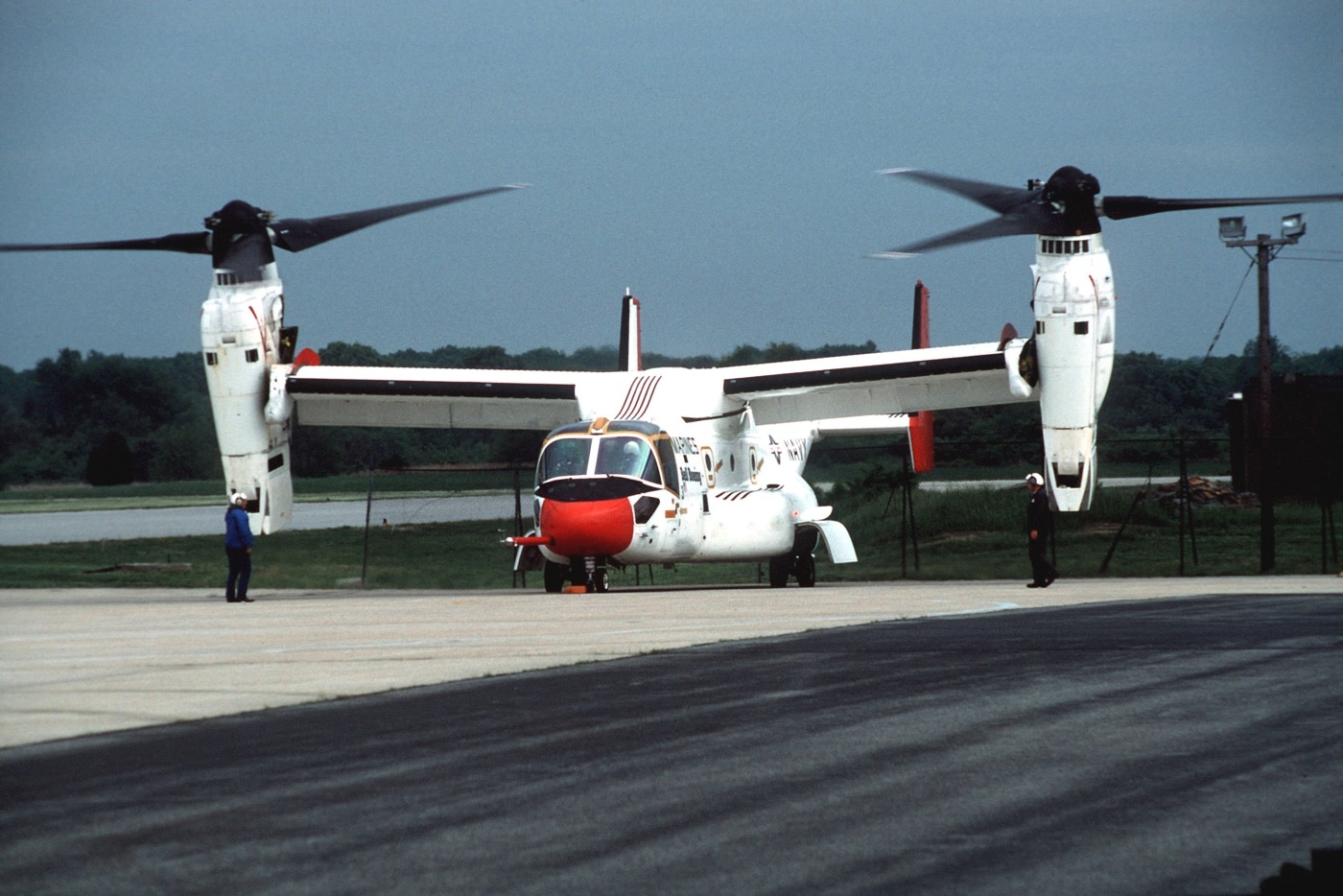
Generally speaking, the more blades you have, the slower the rotor system will turn. The slower the rotors turn, the faster the helicopter will fly. For this reason, an AH-64 Apache with four rotor blades is markedly faster than an OH-58 with just two.
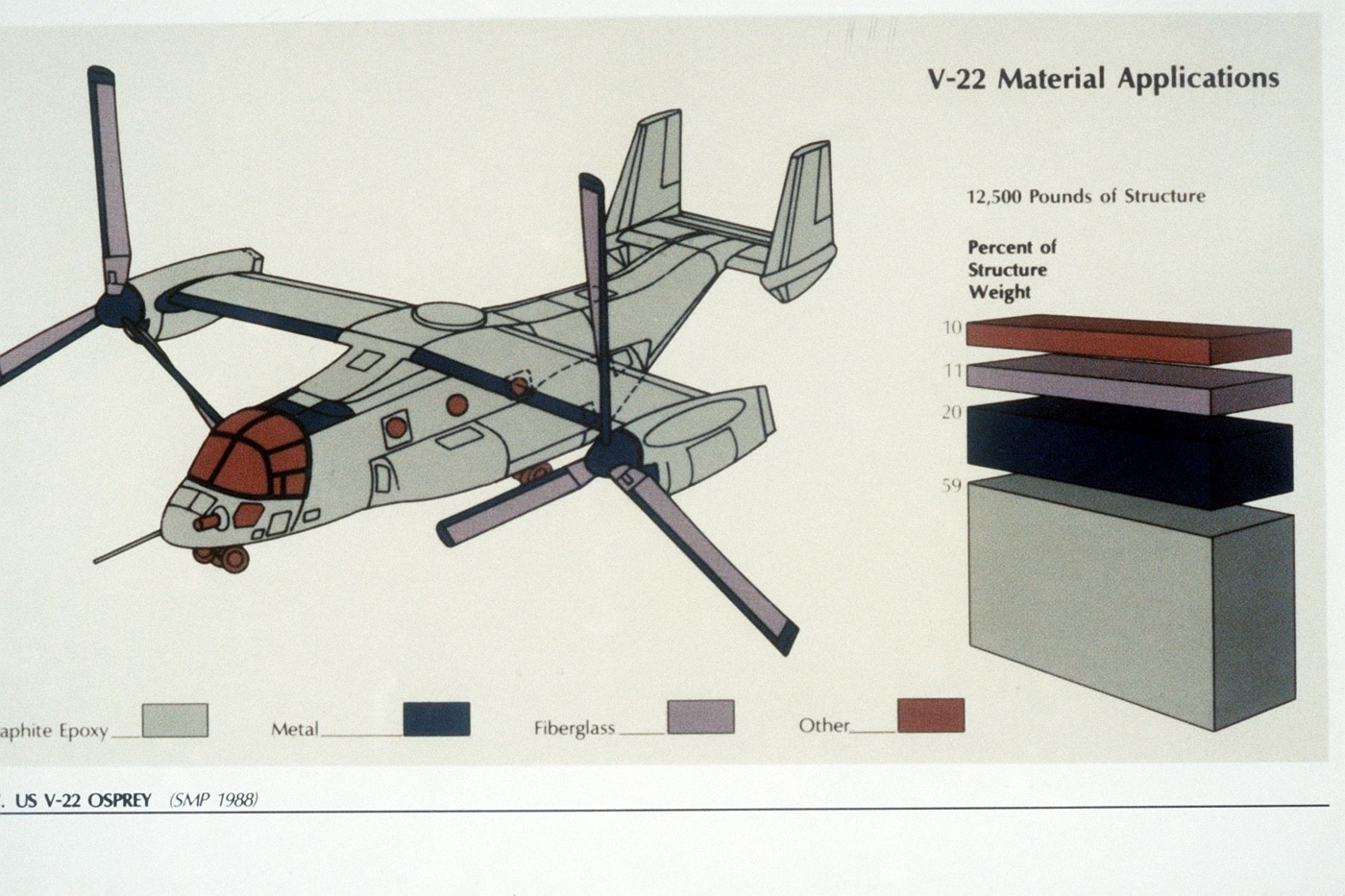
Aircraft designers have forever dreamt of the capacity to create a combat aircraft that would take off and land vertically like a helicopter but then cruise at serious airspeeds like an airplane. In each case, physics invariably intervened. Then in 1989 Bell engineers finally pulled it off with the first flight of the V-22 Osprey. The Osprey is the helicopter that identifies as an airplane.
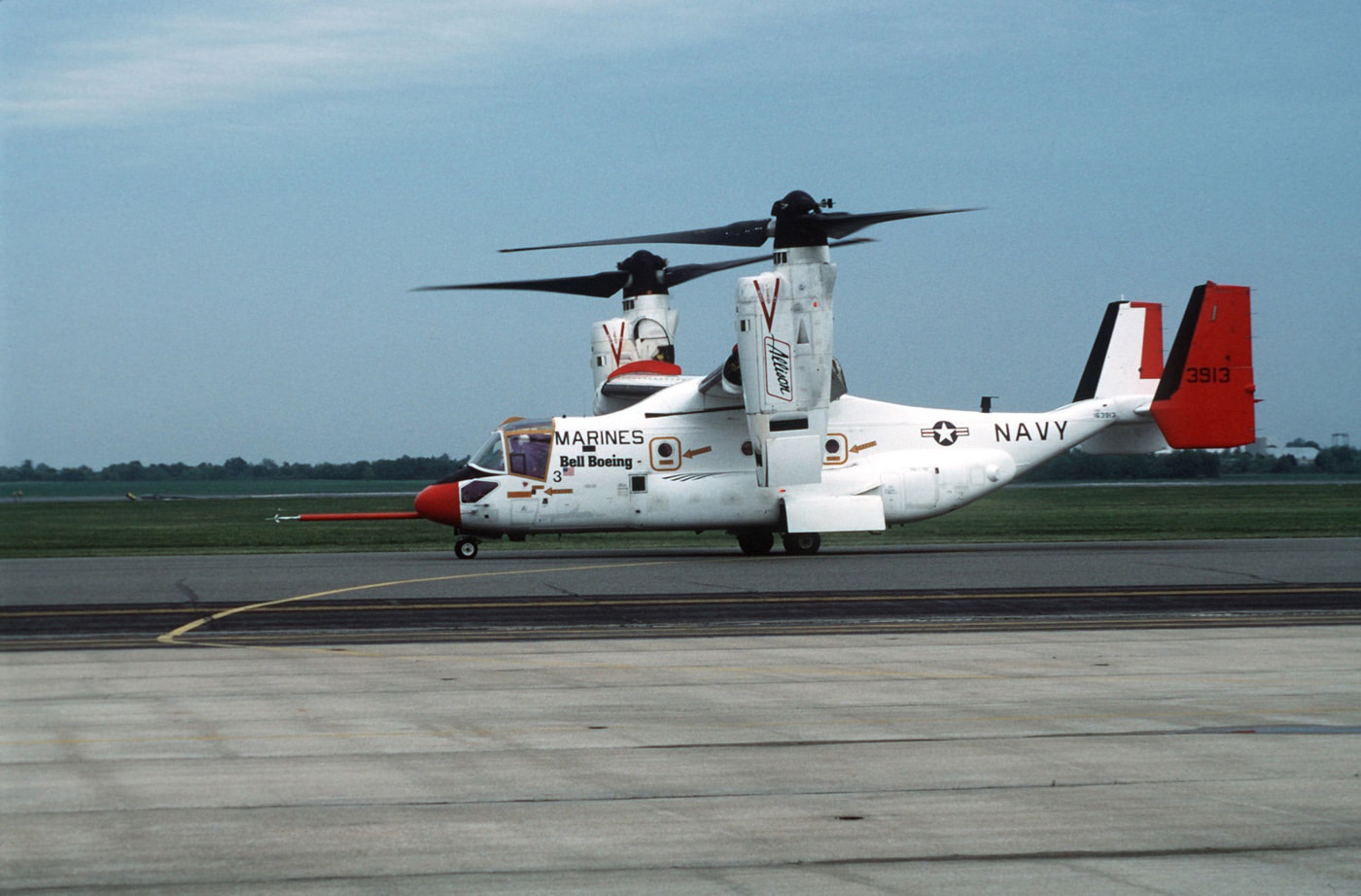
Technical Details
The tiltrotor V-22 Osprey is a breathtakingly complex piece of machinery. For starters, while each engine is located on the wingtip behind an oversized propeller blade, it is also mechanically linked to the opposite blade. Osprey crews call these appendages proprotors. In the event of a single engine failure, the remaining engine still powers both proprotors. Twin-rotor helicopters like the CH-47 Chinook operate the same way. Each engine drives both sets of blades independently.
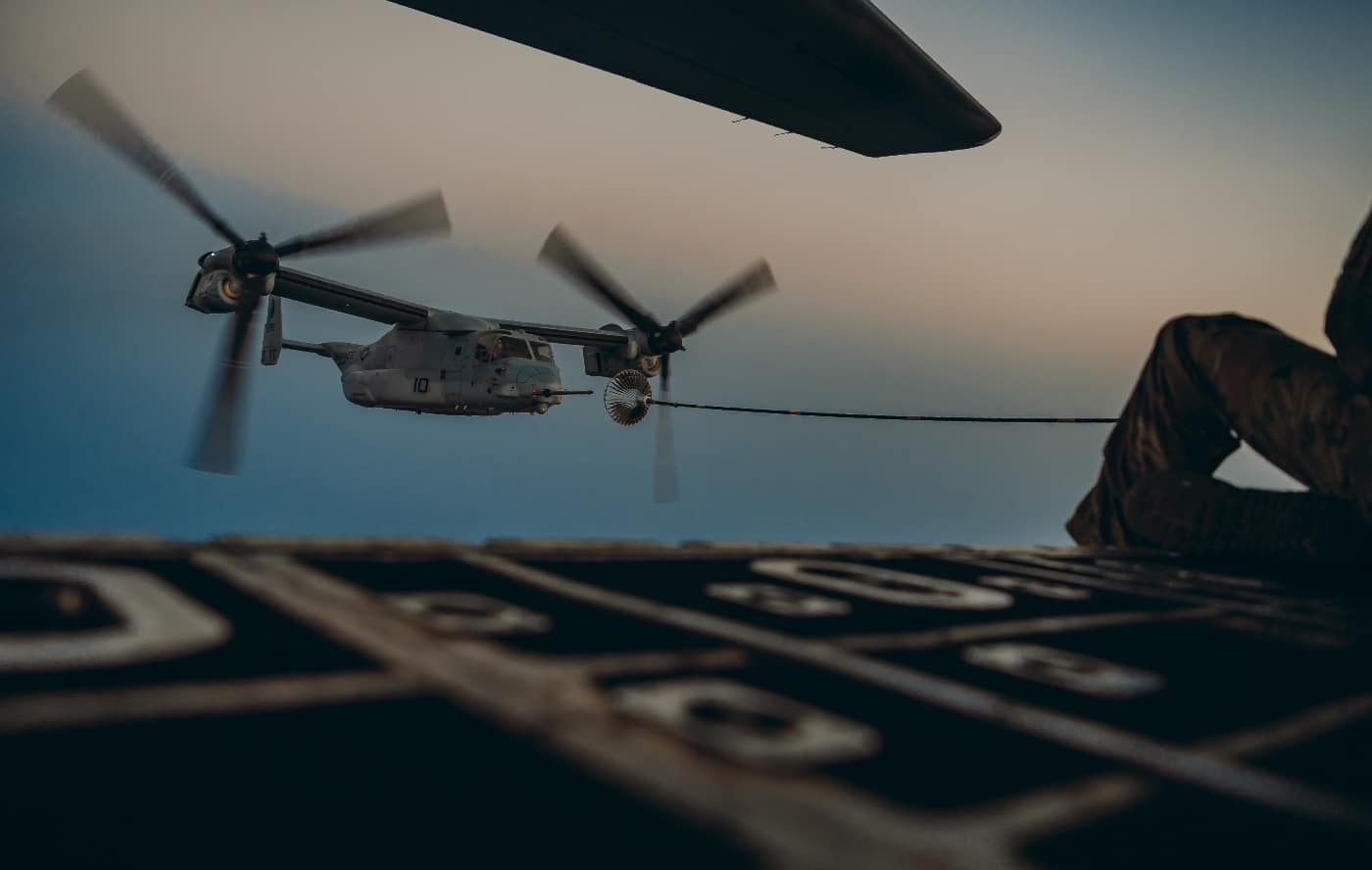
Advanced composite materials account for 43 percent of the Osprey’s weight. The V-22 incorporates three redundant fly-by-wire flight control systems to enhance survival in a high-threat environment. The aircraft is also capable of aerial refueling.
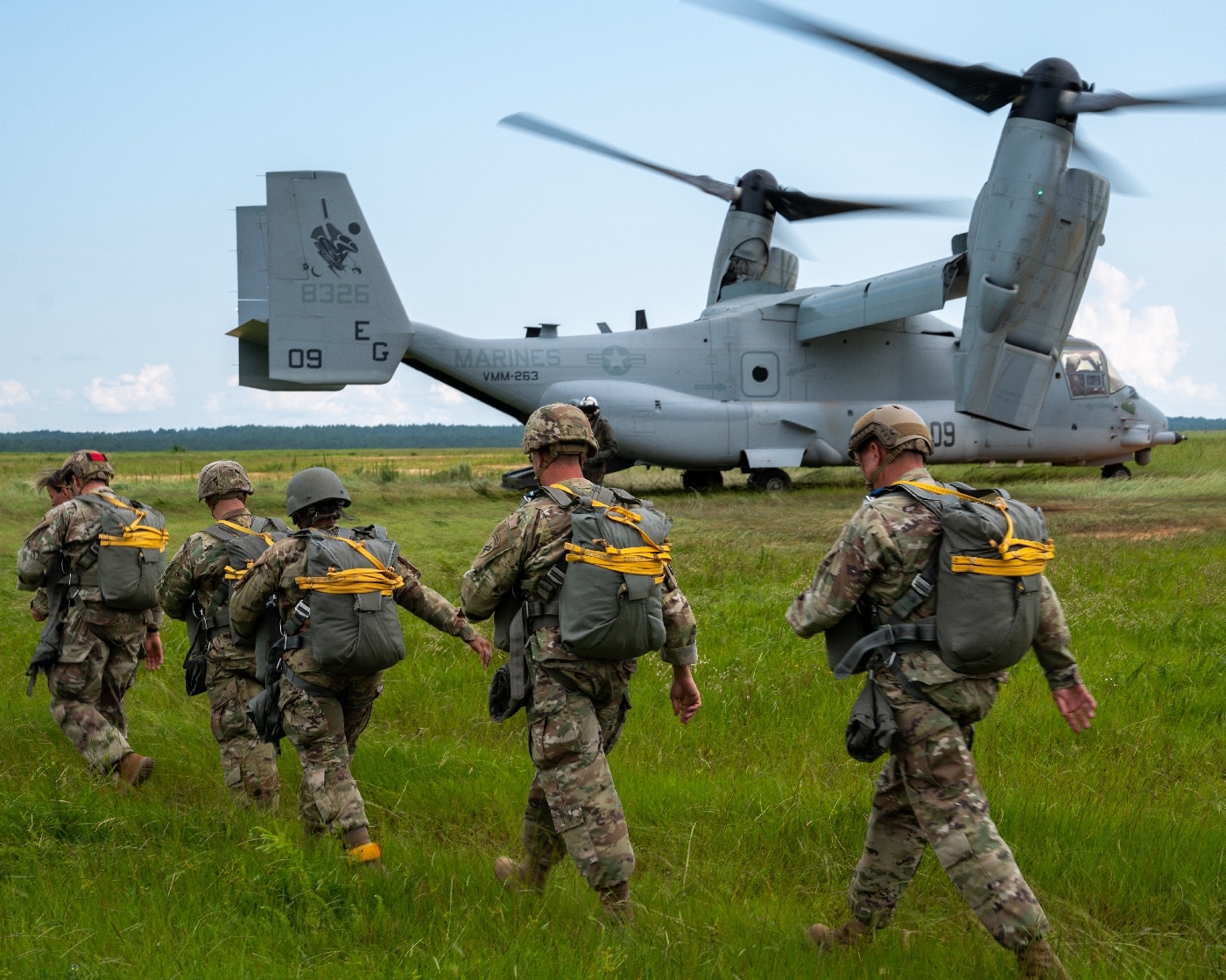
To transition effectively between the hover and forward flight, the engine nacelles gimble in a synchronized fashion around the wing. Transitioning between flight modes requires about 12 seconds.
The Osprey has to land from a hover as the blades are too long to allow a running landing.
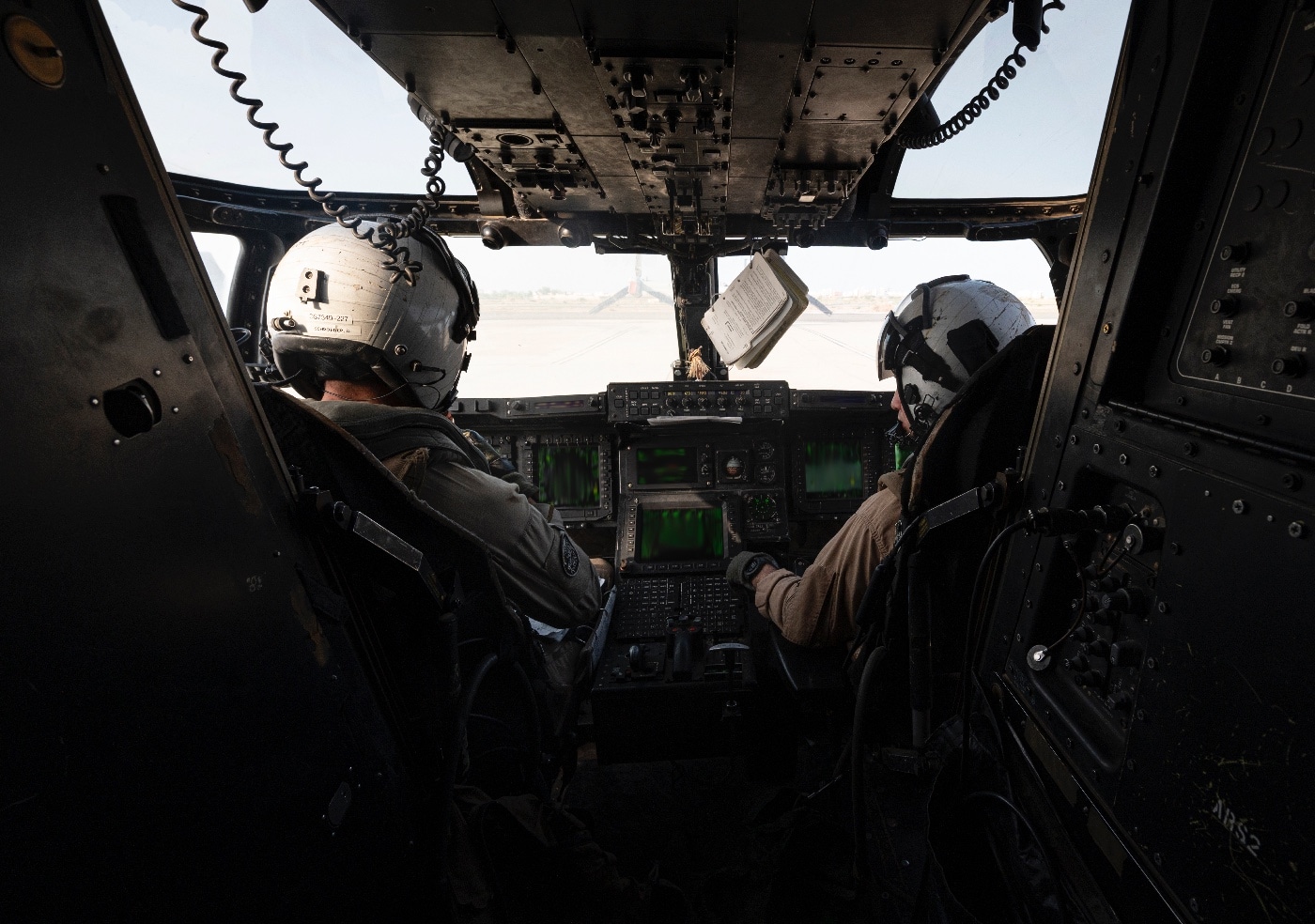
The technical challenges required to contrive a reliable flight control system that takes advantage of the tiltrotor’s radically unconventional design simply boggles the mind. This was the first entirely new type of flying machine in decades, and it was packed to the gills with unproven technology. Two of the first six prototypes were lost to crashes.
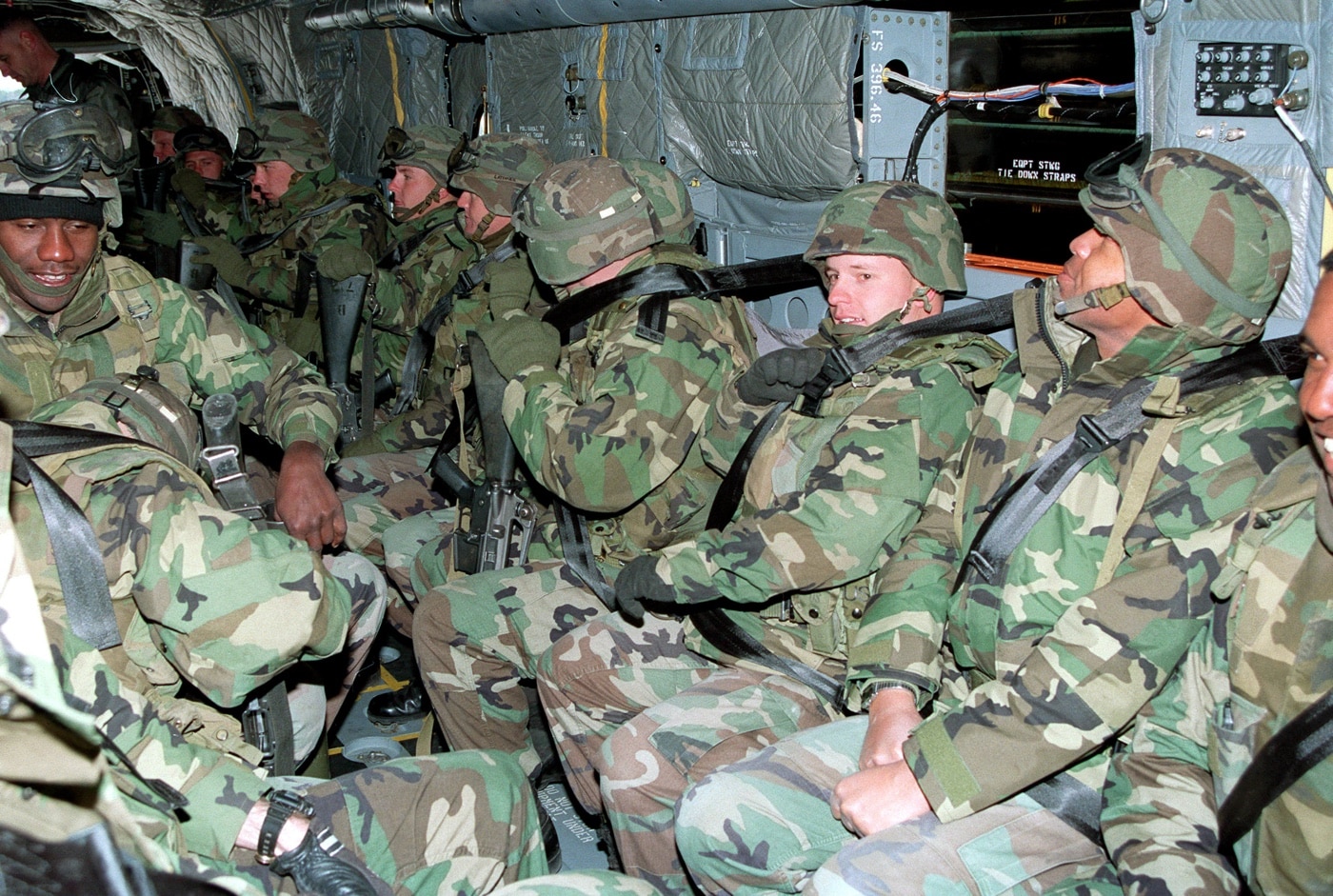
By the late 1990s, flight testing at Pax River Naval Air Station was proceeding apace. Then in 2000 there were a further two fatal V-22 crashes that claimed a total of 23 Marines. This resulted in a fleet-wide grounding, detailed investigation, and fairly significant redesign. The version of the V-22 that emerged from this process was both safer and more reliable.
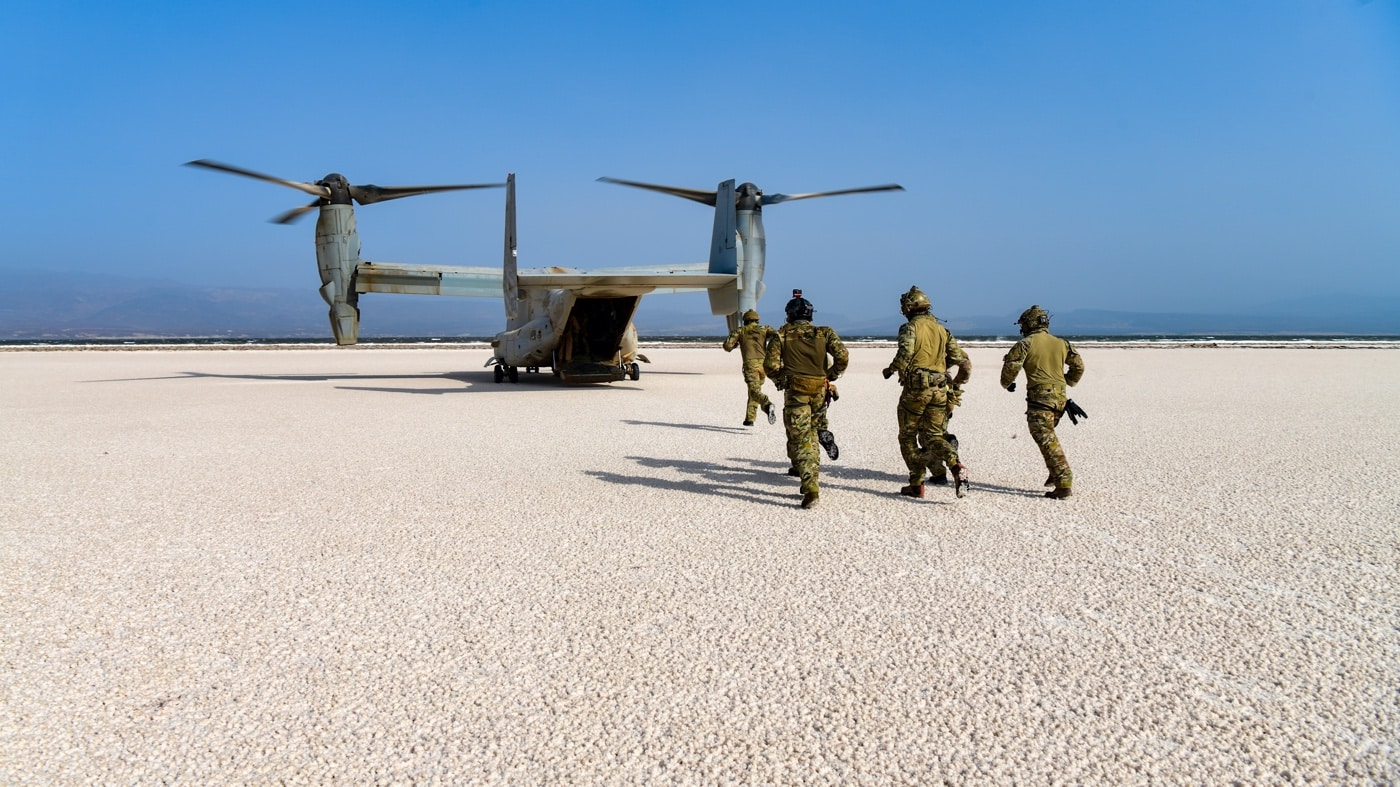
Throughout it all, this profoundly expensive aircraft became all the more so. Each airframe costs Uncle Sam between $84 and $110 million depending upon how you crunch the numbers. Policy makers threatened to cancel the project regularly. However, today’s V-22 is a capable and effective combat aircraft.
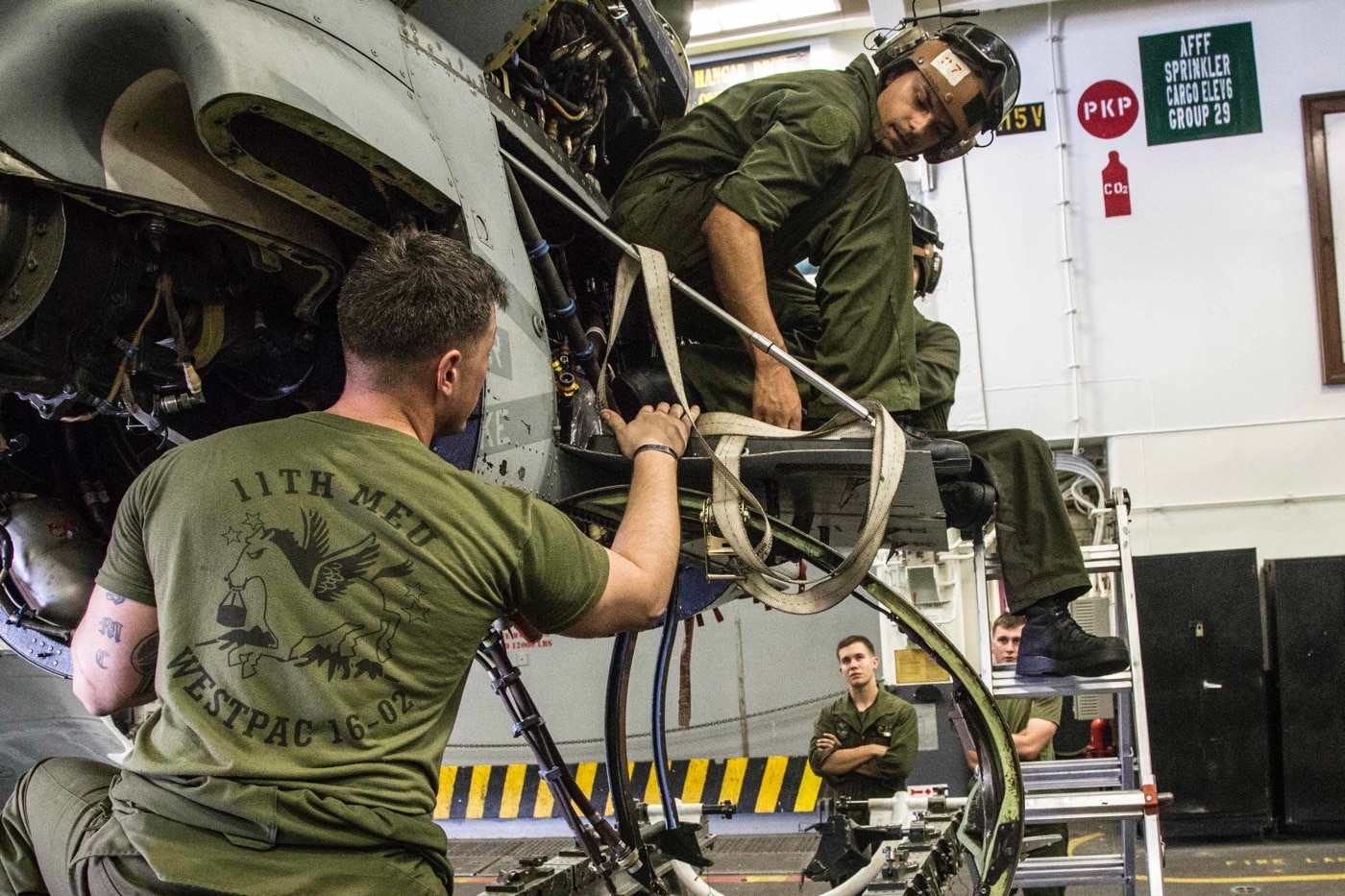
Capabilities
Marine Ospreys are designated MV-22. USAF versions are CV-22. The Jarheads demurred on the designation as they already called the Navy’s aircraft carriers CV’s. The MV-22B is 57 feet long, tops out at 42,712 pounds, and will carry between 24 and 32 combat troops. Power comes from a pair of Rolls Royce T406-AD-400 turboprop/turboshaft engines. Maximum speed at altitude is 305 knots or 351 mph.
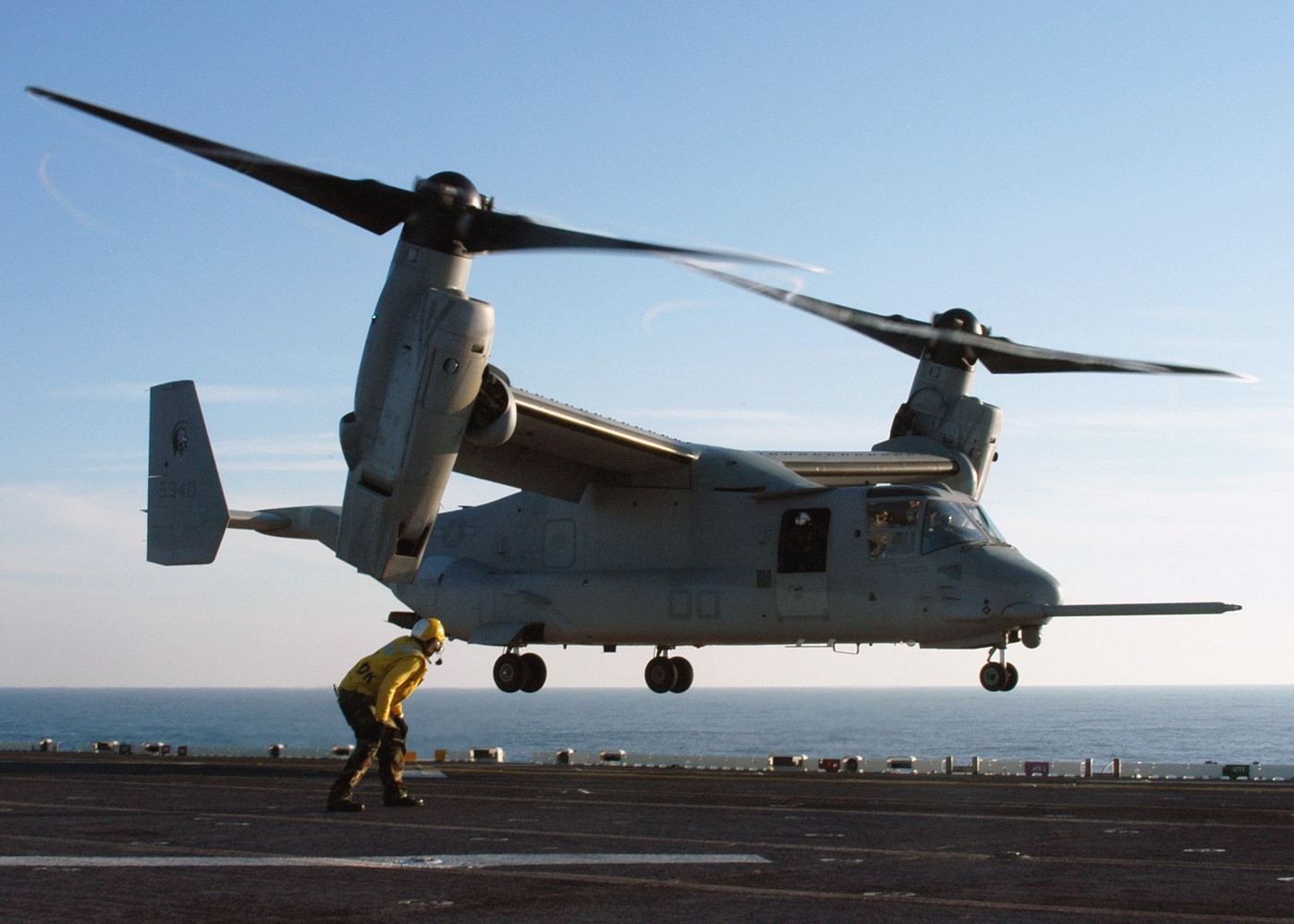
There was an early proposal to create a sort-of gunship version of the Osprey with a chin-mounted GAU-19 three-barrel 12.7mm machinegun along with sundry external weapons pylons, but this was scrapped. Defensive armament consists of an M240 .30-caliber machinegun or M2 Browning .50-cal mounted on the aft ramp.
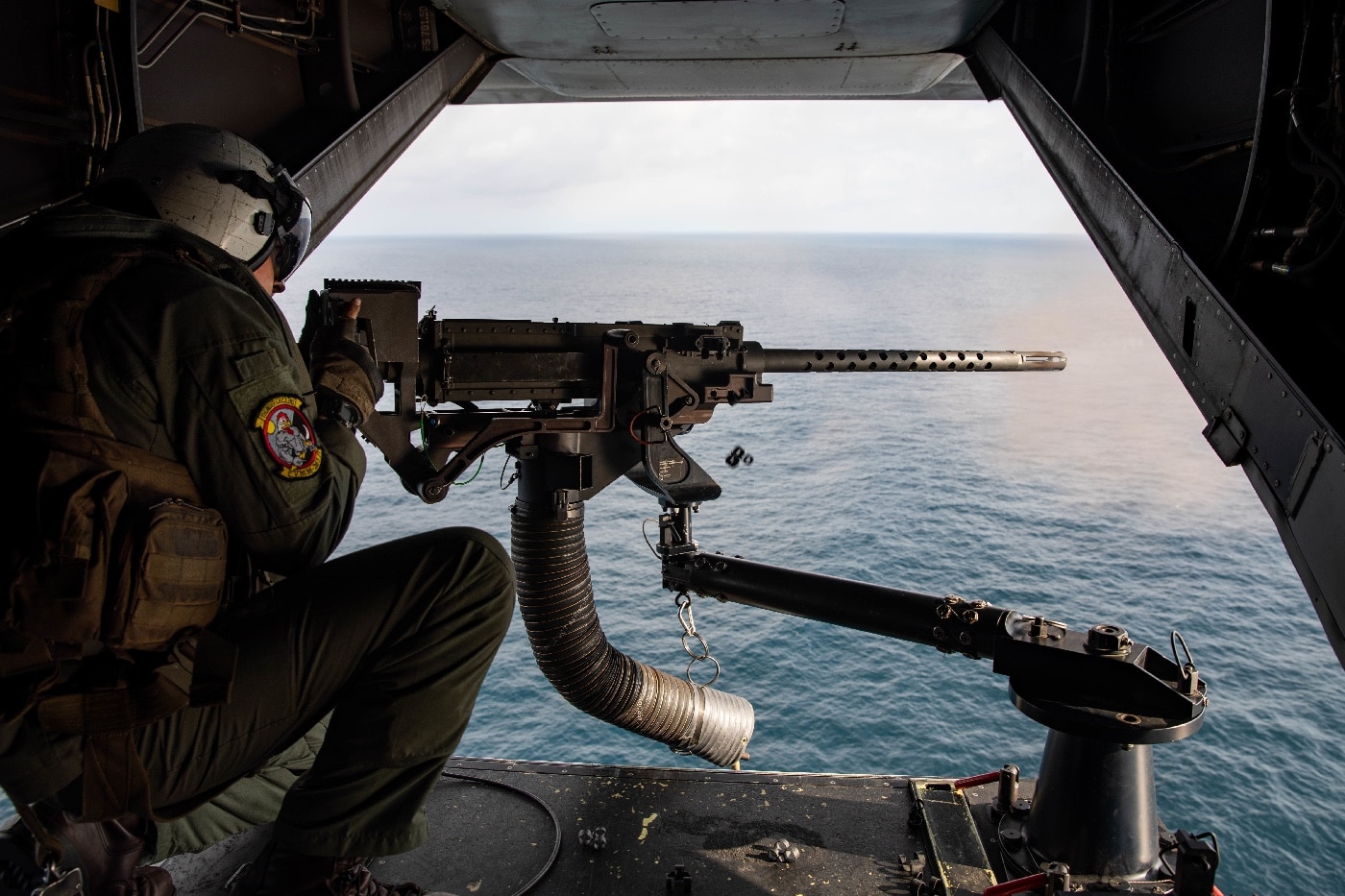
The Interim Defense Weapon System (IDWS) mounted a retractable GAU-17 minigun under the nose along with remote sighting and sensor suites. 32 IDWS units were produced, and they saw combat service in Afghanistan. However, the gun assembly weighs 800 pounds and diminishes performance and payload as a result.
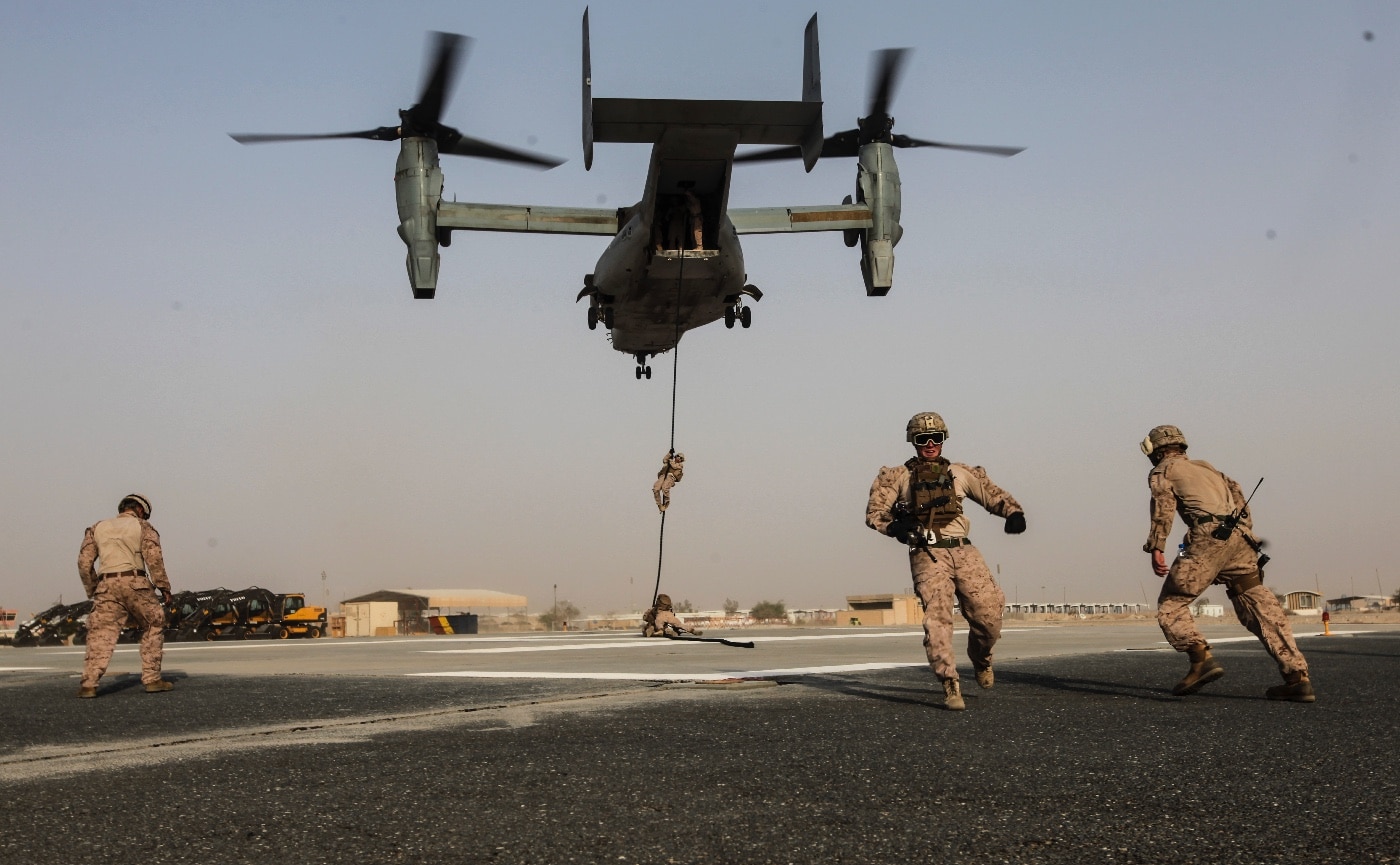
Advanced terrain-following radar and directional infrared countermeasures make the V-22 a potent special operations deep-penetration platform. The V-22 has replaced the MH-53 Pave Low in Air Force special operations service. The Marines have used the MV-22 to replace their geriatric fleet of CH-46 Sea Knights.
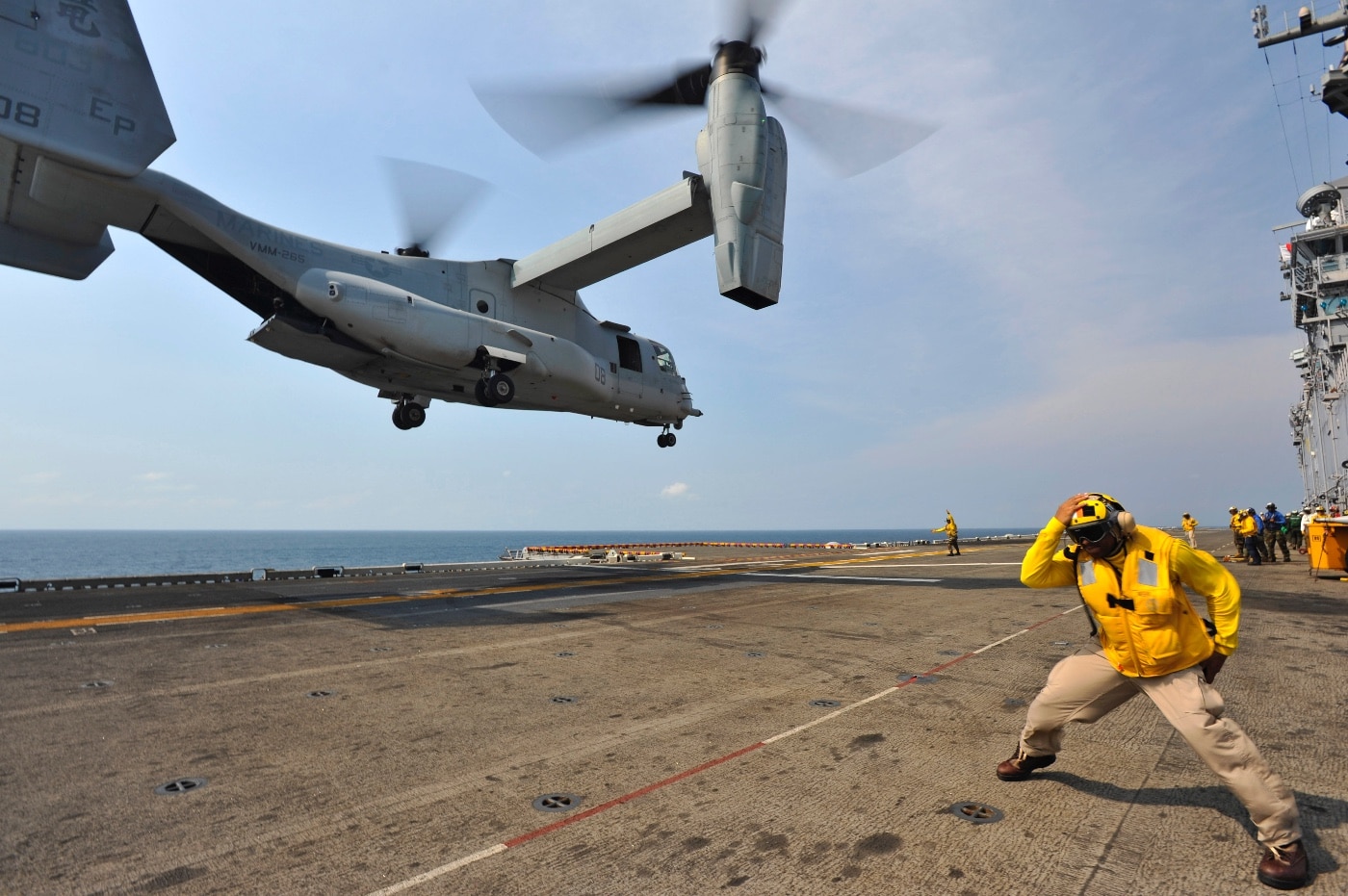
Ruminations
The V-22 still remains a controversial aircraft. As of late 2023, the V-22 fleet had suffered 16 full hull-loss accidents with a total of 62 fatalities out of a fleet of around 400 aircraft. Though the Osprey has been evaluated by a wide range of friendly nations, to date it has only seen operational service with the militaries of the United States and Japan. The astronomical price tag and unprecedented technology drive that train.
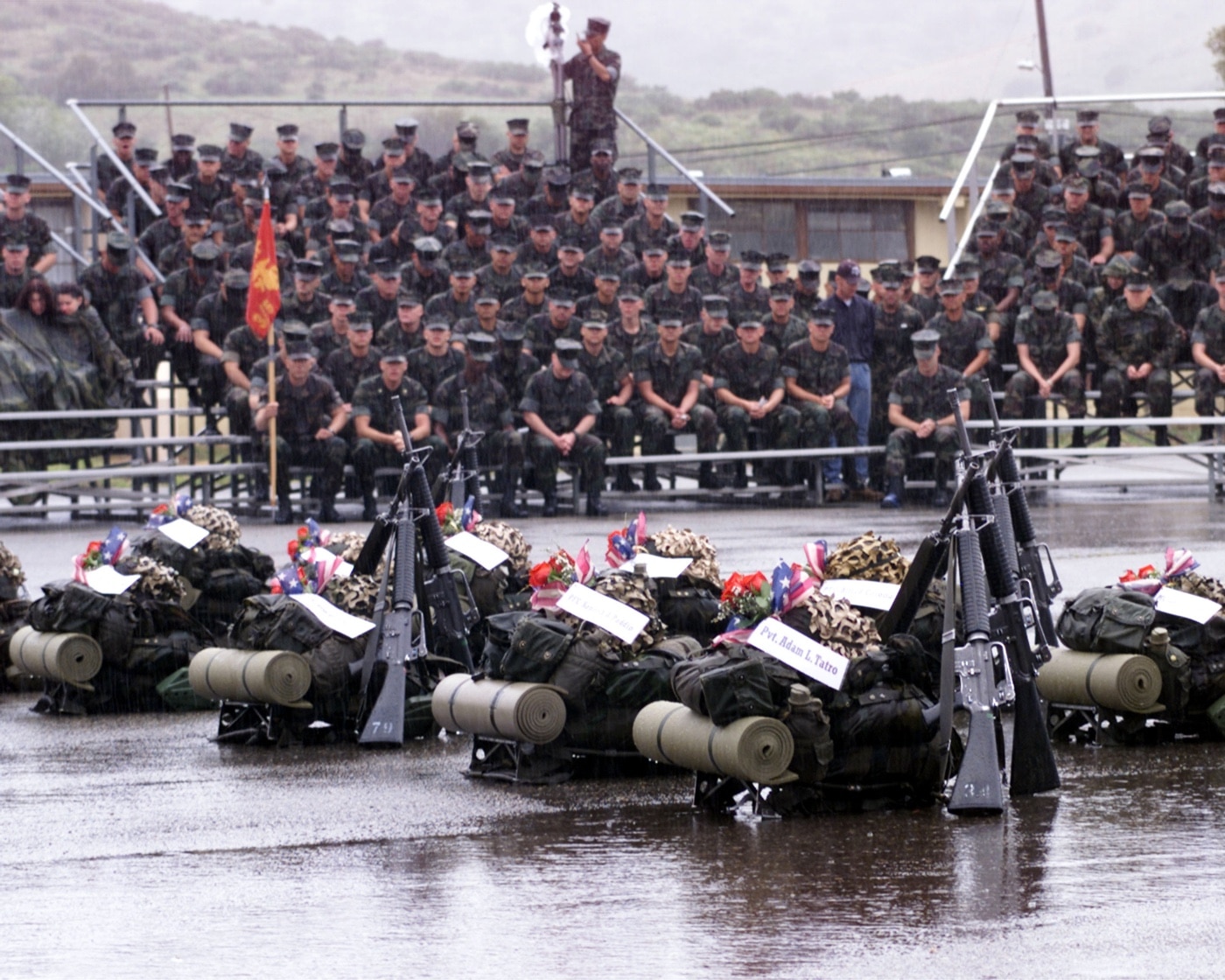
The proprotor blades fold for storage, and the wing pivots to rest alongside the fuselage. This capability allows the V-22 to deploy onboard ships with limited storage space. The V-22 has by now logged hundreds of thousands of operational flight hours. Now that many of the bugs have been excised, the Marines claim it has the best safety record of any of their rotary-wing platforms.
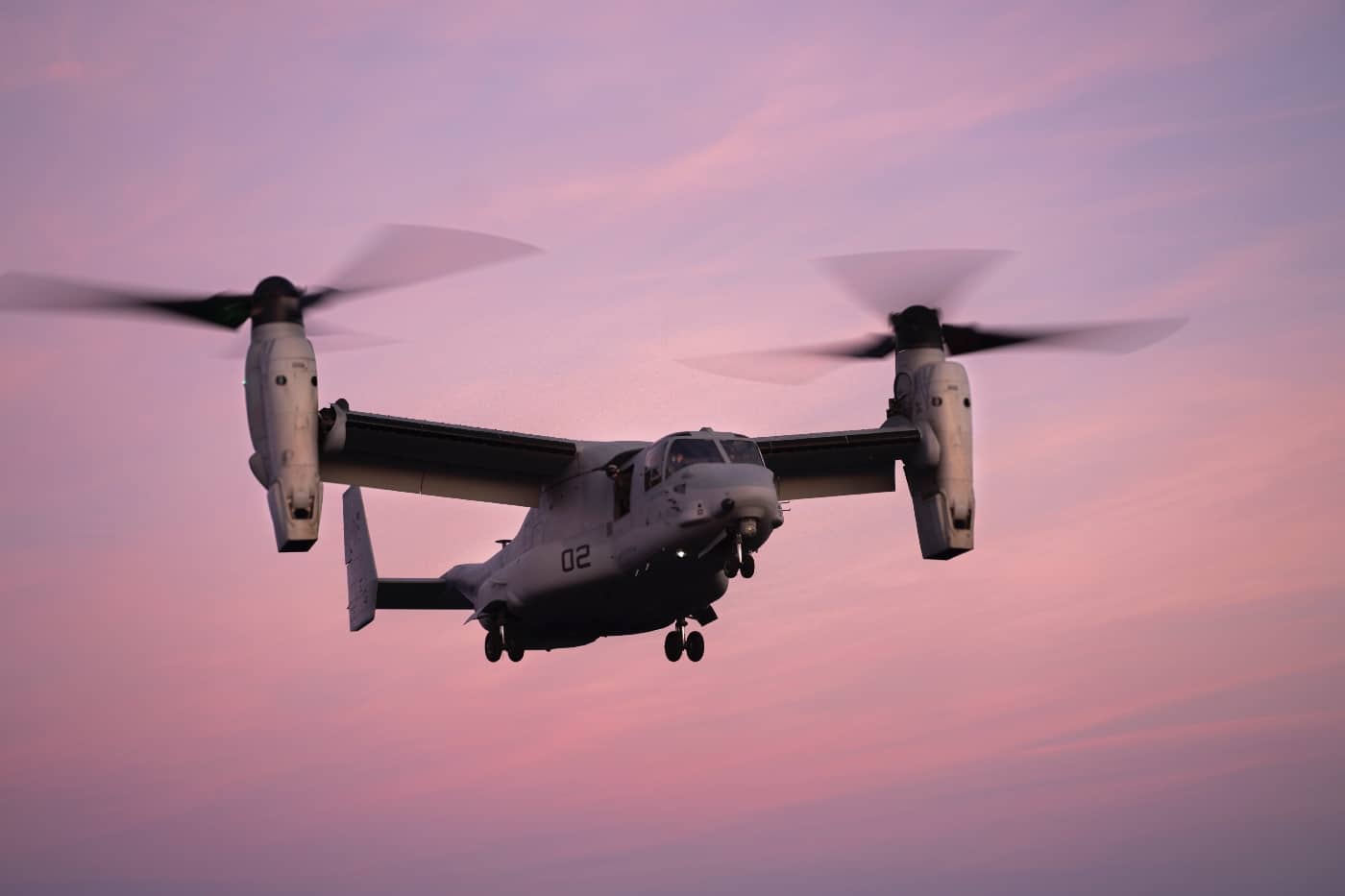
The V-22 was originally intended for use by all four services. However, the Army bowed out of the project early on for budget reasons.
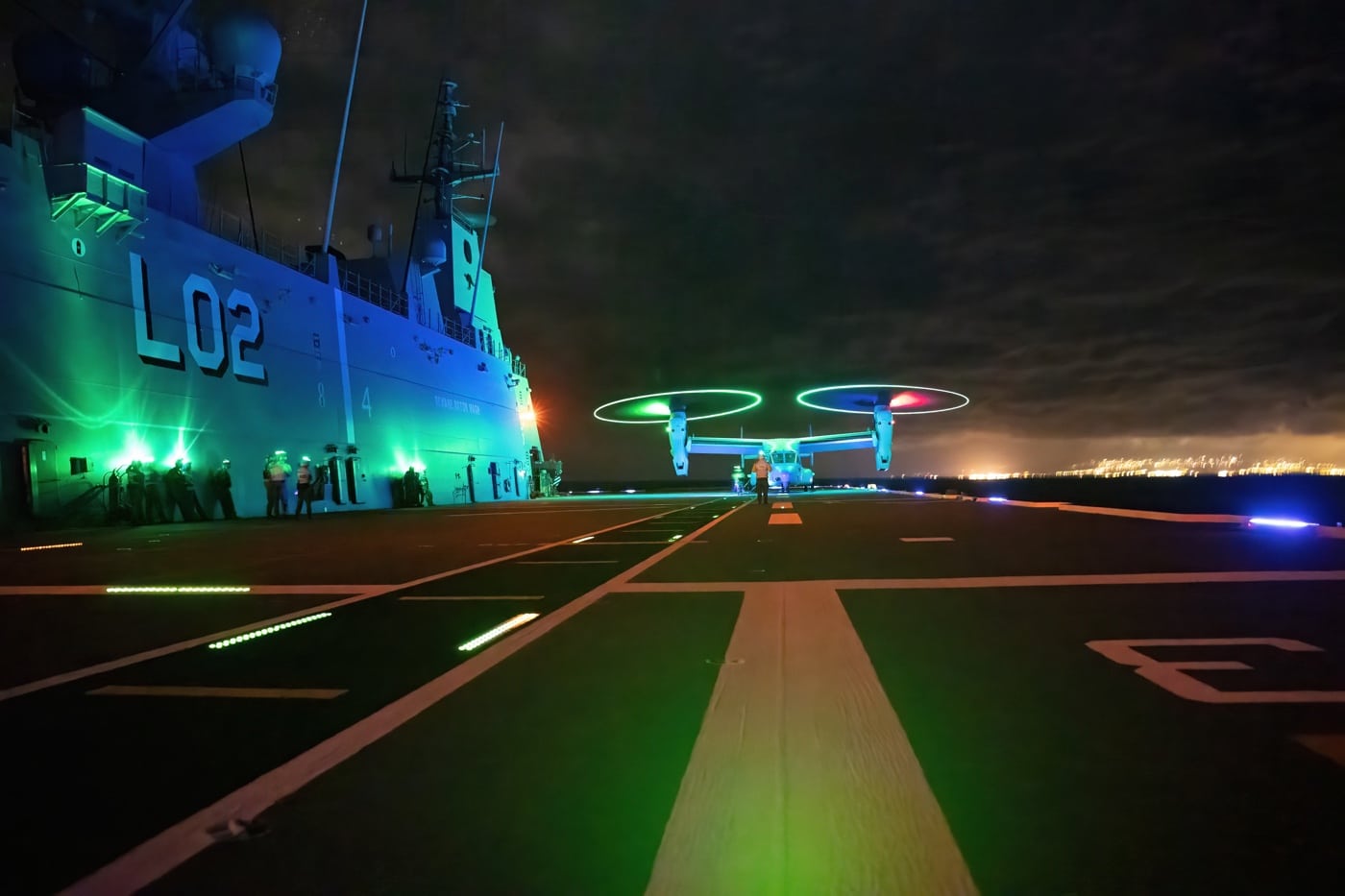
Interestingly, the Big Green Machine recently announced its official replacement for the UH-60 Blackhawk helicopter. Drawing from a broad field of both conventional and unconventional designs, the Army ultimately settled upon the Bell V-280 Valor tiltrotor aircraft. It seems the legacy of the V-22 Osprey will indeed live on for generations to come.
Editor’s Note: Please be sure to check out The Armory Life Forum, where you can comment about our daily articles, as well as just talk guns and gear. Click the “Go To Forum Thread” link below to jump in!
Join the Discussion
Continue Reading
Did you enjoy this article?

 86
86






